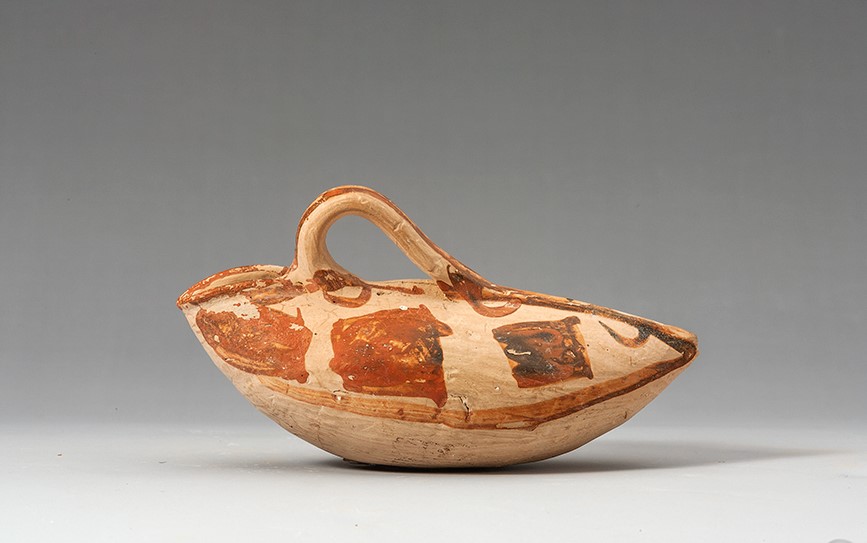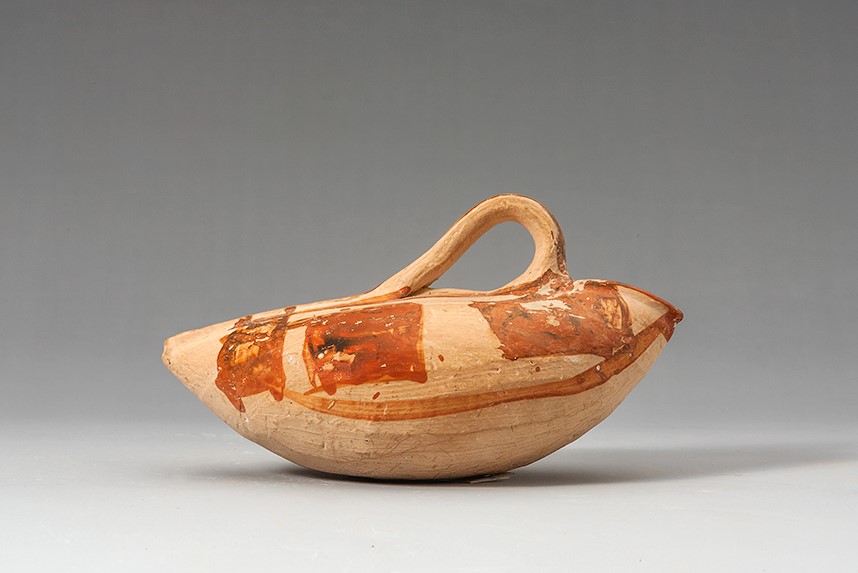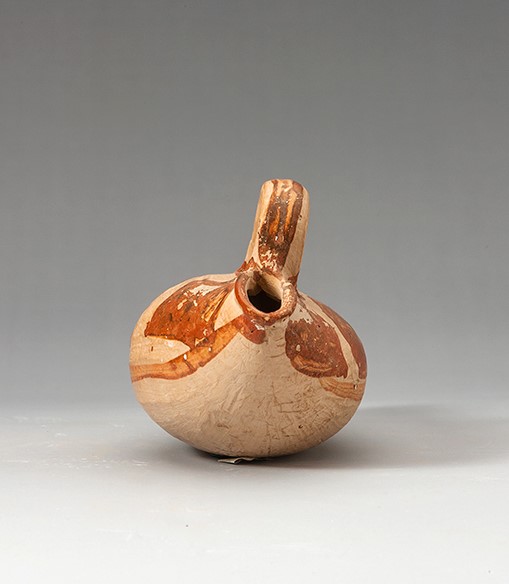Acquisition number: 1980.13
Mycenaean Askos. Intact. The surface is a cream-buff, with some white inclusions showing through the surface. The body of the vessel is made of a single sheet of clay folded over and pinched together along the top, leaving an opening at one end for the pouring spout. A loop handle is attached in line with the seam. The surface was smoothed with a series of strokes running the length of the vase, more carefully finished on the top than the underside.
Title: Mycenaean Askos - 1980.13
Acquisition number: 1980.13
Author or editor: J.R. Green
Culture or period: Mycenaean Late Helladic II or III
Date: 14th century BC
Material: Clay - Terracotta
Object type: Vessels - Askos
Dimensions: 139mm (l) × 76mm (h)
Display case or on loan: 1
Keywords: Bronze Age, Late Helladic, Mycenaean, Asia Minor
Charles Ede Ltd (London), Antiquities 117 (1980) no. 29 (ill.).
1980.13
Mycenaean Askos
Purchased. Ht ca 7.6cm; length ca 13.9cm.
Intact. The surface is a cream-buff, with some white inclusions showing through the surface. The body of the vessel is made of a single sheet of clay folded over and pinched together along the top, leaving an opening at one end for the pouring spout. A loop handle is attached in line with the seam. The surface was smoothed with a series of strokes running the length of the vase, more carefully finished on the top than the underside.
The paint is red-brown. On the shoulder on each side there are three solid, roughly square panels between lines. The edge of the lip is also painted. There is a band along the upper face of the handle.
The shape is Furumark type 194, and it is comparatively rare in Mycenaean pottery. The date is difficult to determine with any precision, and one may suspect that it is of provincial manufacture. Late Helladic II-III. See P. Misch, Die Askoi in der Bronzezeit (Jonsered 1992) 139-142, with references.
Charles Ede Ltd (London), Antiquities 117 (1980) no. 29 (ill.).


